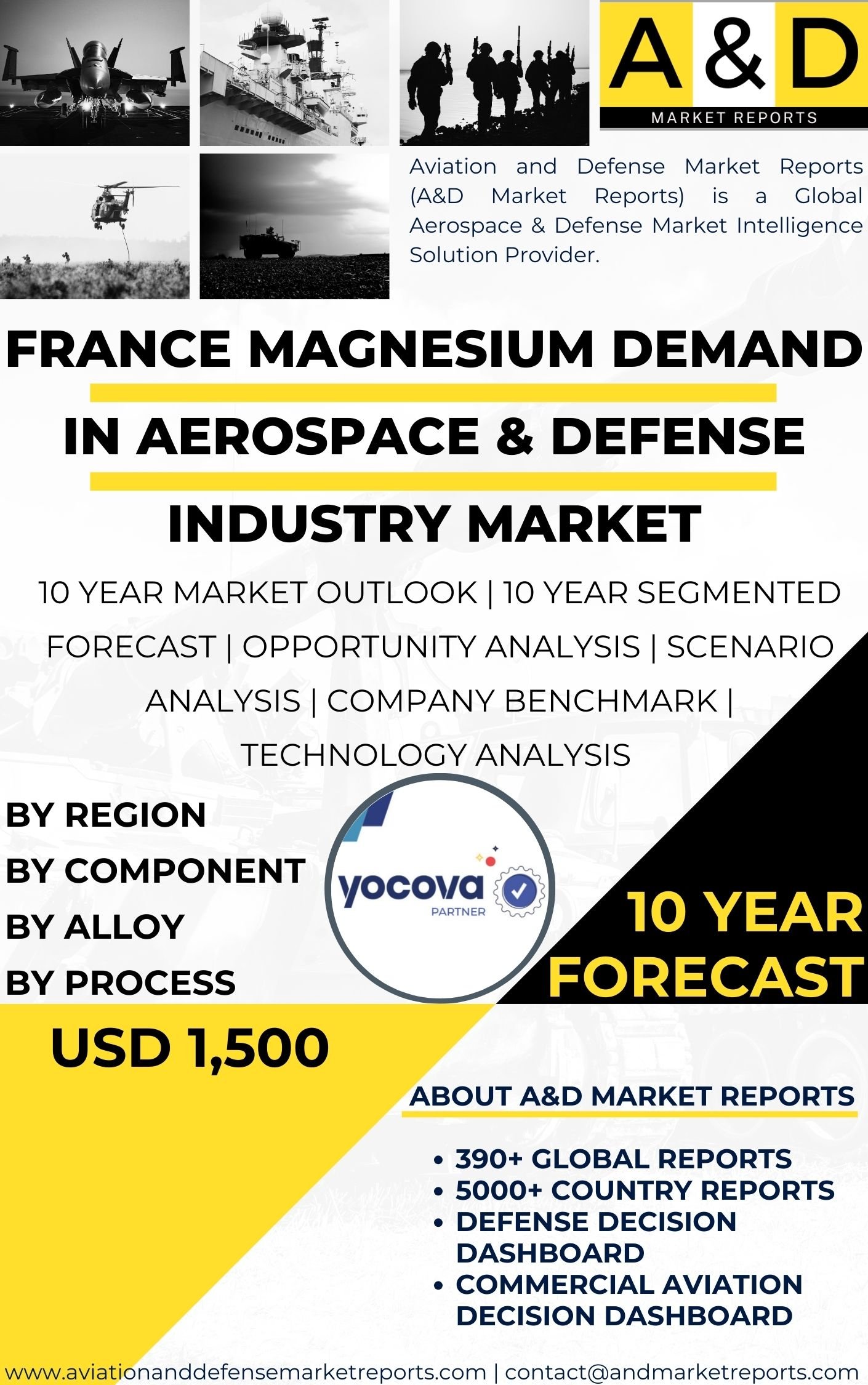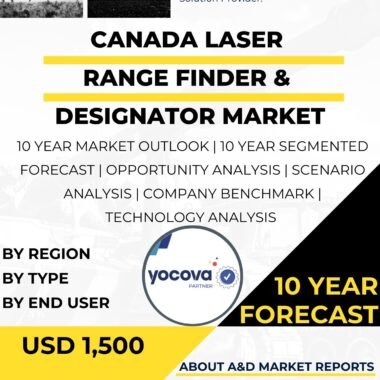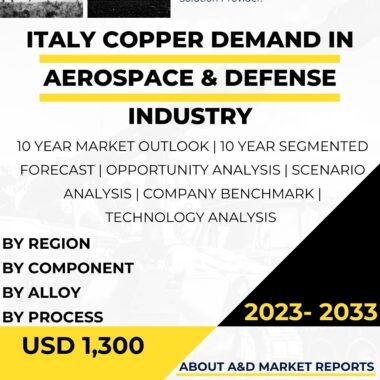Description
The magnesium demand in the aerospace and defense industry market in France has roots deeply intertwined with the innovation-driven trajectory of the nation?s sophisticated aircraft and defense manufacturing sectors. French aerospace engineering has historically prioritized advanced materials that can create both enhanced efficiency and agility in flight operations, and magnesium alloys have increasingly become an important component in this evolution. The defining characteristic of magnesium alloys in these sectors is their remarkable combination of low density and high specific strength. French aerospace manufacturers seek materials that enable the design of lighter components without sacrificing the structural integrity required by the demanding operational profiles of both civil and military aircraft. Magnesium?s capacity for reducing overall weight directly appeals to ongoing efforts to improve fuel efficiency, extend flight range, and lower the operating emissions of France?s vast commercial and military fleet. The pursuit of greener, more sustainable aviation has elevated interest in magnesium further, since its use can contribute to the European Union?s ambitious environmental targets, which are actively embraced by leading French entities in aviation.
The historic use of magnesium in defense traces back to efforts to gain performance advantages in military aviation and vehicle design through reduced mass and enhanced maneuverability. Over time, production and application knowledge matured in France, supported by both large defense primes and a robust network of Tier-1 and Tier-2 suppliers. Magnesium alloys entered wider use in crafting intricate fuselage sections, complex bracketry, engine housings, and even internal parts of missile and satellite assemblies. The country?s largest aerospace manufacturers, including well-known names entrenched in the global supplier network, have continued to push forward with alloy research, often collaborating with research institutes and specialized material companies to develop grades offering superior resistance to corrosion and fatigue. These efforts aim to overcome the traditional limitations of magnesium, especially its historical volatility and its susceptibility to corrosion in harsh field conditions.
Within the context of France?s aerospace and defense value chain, magnesium is prized not only for its lightweight properties but also its machinability and adaptability to advanced manufacturing processes such as precision casting and additive manufacturing. In recent years, French industry, echoing broader European trends, has turned its attention to 3D printing of magnesium components, which promises tailored, lightweight, high-strength structures optimized for specific roles in next-generation military and commercial aircraft. Additionally, the integration of rare-earth elements into magnesium alloys, supported by rigorous French metallurgical research, has led to a new class of materials with improved thermal stability and resistance to mechanical stress, broadening their application to include engine brackets, landing gear, and critical interior parts that face fluctuating temperatures and intense use. The close cooperation between research bodies, government innovation agencies, and leading manufacturers supports the continued exploration of new alloy formulations that fulfill both national defense programs and the requirements of global aircraft platforms assembled in French factories.
The economic significance of magnesium in France?s aerospace and defense landscape is also bound to the nation?s competitive position as a hub for both final assembly and component supply within Europe. The country benefits from a broad ecosystem that not only produces complete airframes and military systems but also exports high-value parts and subassemblies. Magnesium alloys support French participants in winning international contracts for commercial airliners, business jets, rotorcraft, unmanned aerial vehicles, and defense platforms. The rising global expectation for environmentally sound but high-performance aircraft gives French innovators an incentive to keep pushing for greater material efficiency, both to maintain their market leadership and to meet the evolving expectations of major global airframe OEMs and defense procurement agencies. Furthermore, the resilience of the French supply chain for magnesium alloys, leveraging both domestic sources and strategic partnerships, buffers it from periodic market volatility and global price fluctuations.
Trends in French magnesium usage include a pivot to greater adoption driven by regulatory pressure to improve fuel efficiency and reduce the carbon footprint of flight. Key French players recognize that every gram saved in aircraft structural weight can translate to operational savings and emissions reductions over the lifecycle of the platform. As a result, the demand for advanced magnesium alloys infiltrates both new development programs?where design flexibility allows for maximum lightweighting from the outset?and the modernization of legacy fleets, where retrofitting with new magnesium components can yield incremental performance and regulatory compliance benefits. The integration of digital design and simulation technologies aids French engineers in testing magnesium parts? resilience to real-world stressors, accelerating their safe adoption in both civil and defense applications.
Key players in the French magnesium market for aerospace and defense span a blend of domestic manufacturers, multinational primes, and specialized material innovators. Large aircraft and engine producers work closely with niche French metallurgists and international groups specializing in magnesium extraction, primary processing, and finished alloy production. This collaborative industrial tapestry ensures technological advances are rapidly transferred from research environments into commercial and military products. Several organizations also take part in consortia and EU-funded research projects, maintaining France?s position at the leading edge of metallurgy and light alloy development for demanding aerospace and military applications.
Historically, the reluctance to expand magnesium?s use in France?much like anywhere else?stemmed from well-documented challenges including corrosion, limited high-temperature resistance, and fire risks associated with certain processing conditions. French engineering prowess and investment in R&D have been directed at overcoming these hurdles through innovative alloying techniques, protective coatings, and improvements in part design to ensure safe, reliable service life even in the punishing environments of flight and field deployment. The material?s reactivity, while a challenge, also offers opportunities for researchers to develop new classes of alloys with enhanced traits catering precisely to the aviation and defense industry?s evolving standards.
Moreover, the French regulatory environment, with its detailed standards on aerospace material performance and stringent oversight, provides both a hurdle and a guiding hand in optimizing magnesium adoption. Certification of new alloys and components is a rigorous process, necessitating close engagement between suppliers and regulatory agencies to validate every aspect of material behavior under operational loads. French industry players have excelled at navigating this regulatory landscape, often setting benchmarks that are later adopted across Europe and beyond.
The context of national security and the broader geopolitical climate also influence magnesium demand patterns. As France invests in new-generation military platforms, modernization of existing fleets, and the expansion of UAVs and autonomous systems, the need for lighter, advanced materials only grows. Additionally, the dual-use nature of many innovations?where developments in civil aviation migrate into military platforms and vice versa?fosters a culture of cross-fertilization, further intensifying magnesium research and application. Collaborative programs with allies and industrial partnerships across the EU give French magnesium producers broader access to global technology flows while entrenching their role as stakeholders in the success and resilience of Europe?s defense supply base.
Overall, magnesium demand in France?s aerospace and defense industry is shaped by the country?s enduring commitment to technical innovation, regulatory excellence, and international competitiveness. Through a combination of visionary industrial policy, strong R&D infrastructure, and close-knit collaboration between industry, government, and academia, the French aerospace and defense sector continues to expand its use of advanced magnesium alloys. This ongoing journey reflects both a rich industrial heritage and an ambitious drive toward a lighter, cleaner, and even more agile aviation and defense future, ensuring France?s place at the forefront of global aerospace materials innovation.




